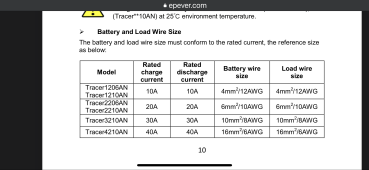For 12V you can over panel up to 3X the rating, that is why it shows 520W/12V, and MAX array of 1560W/12V, you will be fine with 620W of panels since it allows you to over panel up to 1560W for 12V system, I doubt that any one will want to install 1560W of panels only to use only 520W of power.
From user manual:
"This MPPT controller has a limiting function of charging current,
the charging current will be limited within rated range, therefore, the controller will charge the battery with the rated charging power even if the input power at the PV exceeds."
"When the PV array straight polarity, the actual operation of the PV array must NOT 10
exceed three times of rated charge power."



